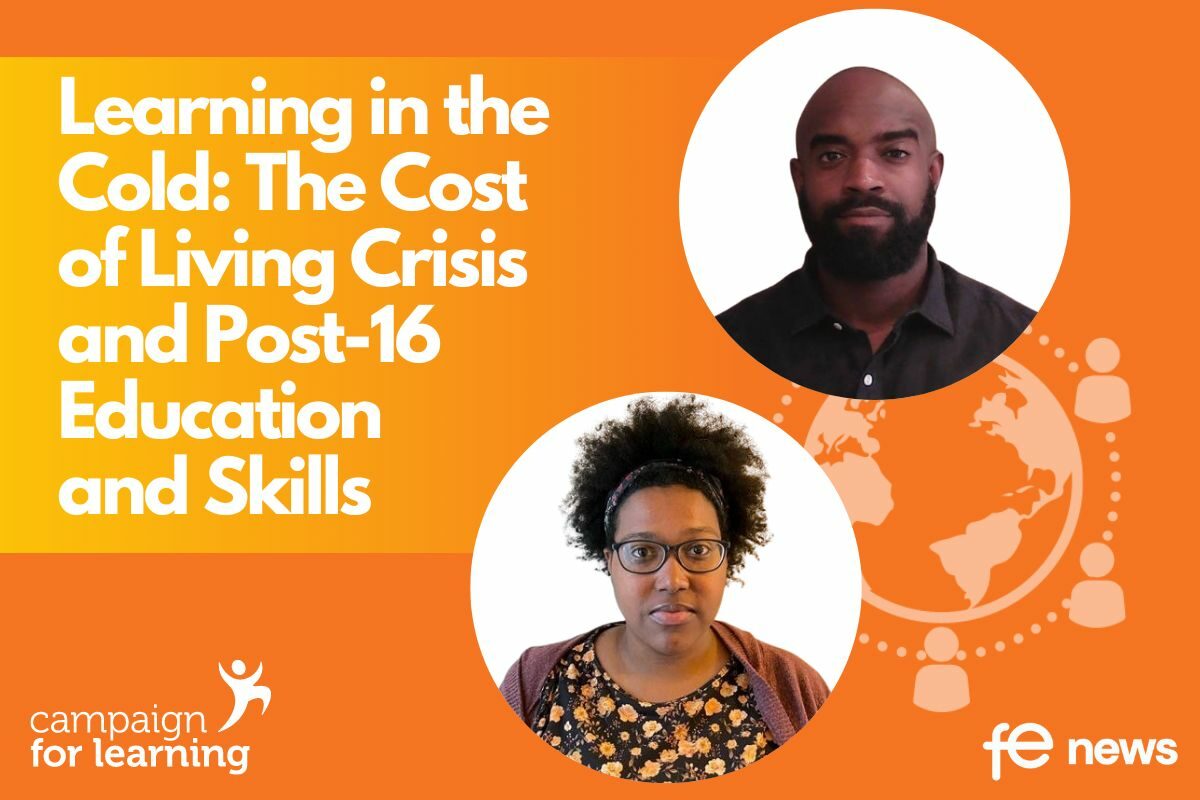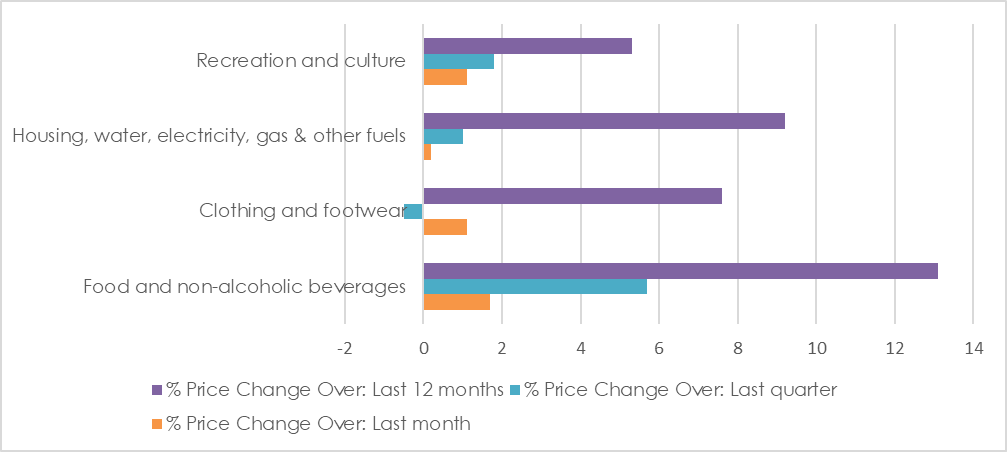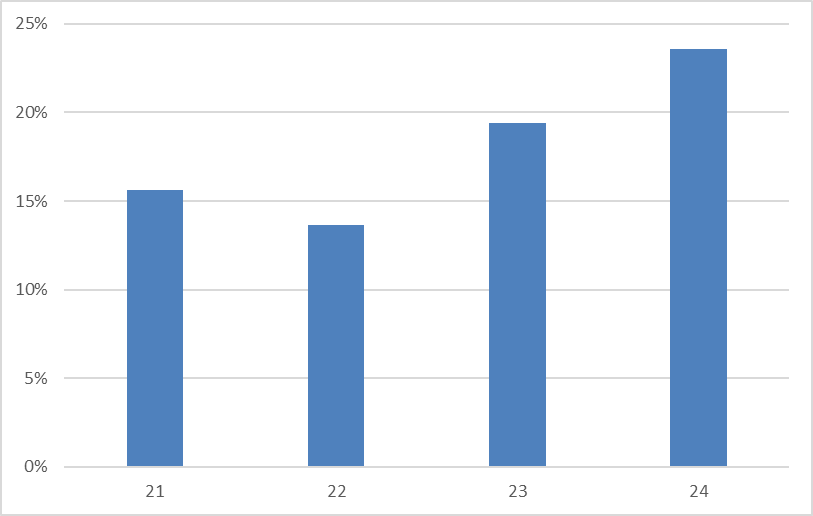The Cost-of-Living Crisis and 16-24 Year-Olds ‘Not in Full-Time Education’

The pandemic posed a huge challenge for all of us. While there might have been a general enthusiasm about the return to ‘normality’, the cost-of-living crisis, looming large, brings a very real risk of further hardship.
Households With 16-24 Year-Olds
Even before the most recent dire predictions about inflation, from November 2021 to March 2022 alone, there was a 25% increase in adults who said their cost of living had risen from 62% to 87% (ONS, 2022). Furthermore, 29% of people aged 16-24 reported that their household would now not be able to afford an unexpected expense. This compares with just 19% of adults aged 65 to 74 and 16% of adults aged 75 and above.
Increases in the price of fuel have received considerable attention in the media and in policy. However, the cost of most everyday items has risen substantially (see Figure 1). The price of food and non-alcoholic beverages as well as clothing and footwear has increased significantly over the last 12 months. We are all affected when daily life gets more expensive, but the impacts are very different depending on personal circumstances and where we live.

Source: YFF analysis of ONS, Consumer price inflation, UK: August 2022
On average, costs have risen more as a proportion of the money available for poorer households than for better-off ones. Based on the percentage of budgets allocated to several broad product categories, the Institute for Fiscal Studies calculated that the annual inflation rate for the poorest 10% of households was 10.9% in April. In contrast, the lowest inflation rate of 7.9%, was experienced by the wealthiest 10% of households. This is because energy costs, the main source of recent inflation, account for a larger part of low-income households’ budgets.
Among young people, those who live with parents or friends may still be affected by rising prices, and any financial ‘safety net’ that they’ve been able to rely on may become less secure. However young people who provide the main source of income for a household, whether this consists of a single person or a family, are likely to find themselves at greater risk of hardship. Some may even delay establishing their own home or family because rising energy, rents, and other costs price them out of living independently.
16-24 Year-Olds who are ‘Heads of Household’ and Not in Full-Time Education
Around 14.3% of young people aged 16-24, not in full-time education, are ‘heads of household’, with the most significant proportions in those aged 21 or above (see Figure 2). For 21-24 year-olds, 18.7% of those not in full-time education are ‘heads of household’. Therefore, a relatively high proportion of young people will be facing a difficult winter, as they are the ones responsible for dealing with increasing costs.

Source: YFF analysis of ONS, Labour Force Survey (April-June 2022)
Young People Not in Full-Time Education
In the UK, 3.15m people aged 16-24 are not in full-time education. Of these, 2.41m are in employment, 0.22m are unemployed and 0.513m are inactive (YFF analysis of ONS, Labour Force Survey, April-June 2022). The cost-of-living crisis will impact differently on young people not in full-time education depending on whether they are employed, unemployed or inactive, and whether they are the head of household.
Employed Young People who are Not In Full-Time Education: The Issue of Insecure Work
Around one-in-nine 18-24 year-olds not in full time education are on zero-hours contracts, agency, casual, seasonal, and low-paid self-employed work ((YFF analysis of ONS, Labour Force Survey, April-June 2022). Insecure work is especially common in this age group, significantly more than those aged 25-50. According to the Work Foundation Index, young workers are two and half times more likely to be in severely insecure work than those in the middle of their working lives (43% of 16-24 year olds vs. 17% of 25-65 year olds).
Disabled Young People who are Not in Full-Time Education
Even in normal times, disabled people face significantly higher living costs than people who don’t have a disability. ONS figures show that disabled people in the UK are being harder hit than non-disabled people by the ever-increasing prices; 42% of disabled adults are spending less on food and other essentials compared to 31% of non-disabled adults. Young people who are disabled are also more vulnerable because they are less likely than others to be in work or full-time education.
16-24 Year-Olds who are Not in Education, Employment or Training (NEET)
The NEET category is different to the ‘Not in Full-Time Education’ category. The key difference is that it includes 16-24 year-olds who are unemployed or inactive, who are in part-time education. For this reason, the NEET estimate of 711,000 is slightly less than the Not in Full Time Education category of 733,000.
Young People and Mental Health
Research shows continually searching for employment, especially for young people who aren’t in employment, education (full-time and part-time) or training, raises the risk of mental health issues.
Deprivation
Low-income households feel the impacts of rising costs more sharply than better-off ones. Moreover, risks for poorer outcomes (such as being NEET or heading up a household) are higher in the more deprived regions of England. For example, more than one-in-five of 16- 24 year-old individuals living in the North West and North East are both NEET and head of household.
Recommendation 1
There needs to be a policy focus on getting 16-24 year-olds in insecure employment who are not in full-time education into more secure forms of employment. This would be helpful in order to mitigate any further hardship within this group – as the cost-of-living crisis progresses – especially for those who are heads of households.
Recommendation 2
There needs to be urgent policy focus on young people who are ‘heads of household’, especially those with other risk factors that may result in being hit harder by rising costs, such as disability, ethnicity and NEET status.
Recommendation 3
More regular updates from ONS on young people not in full-time education and NEET data for England and local areas, rather than just the UK, would also help stakeholders to more easily plan locally tailored interventions to support young people and track outcomes.
By Zach Wilson, Senior Analysis Officer and Andrea Barry, Analysis Manager, Youth Futures Foundation
This article is part of Campaign for Learning’s series: Learning in the cold: The Cost-of-Living Crisis and Post-16 Education and Skills
Order of series
Day 1
Friday 21st October
- Louise Murphy, Economist, Resolution Foundation: The Cost-of-Living and the Energy Crisis for Households
- James Kewin, Deputy Chief Executive, Sixth Form Colleges Association: The Cost-of-Living Crisis and 16-19 Year-Olds in Full-Time Further Education
Day 2
Saturday 22nd October
- Becci Newton, Public Policy Research Director, Institute for Employment Studies: The Cost-of-Living Crisis and 16-18 Year-Olds in Jobs with Apprenticeships
- Zach Wilson, Senior Analysis Officer and Andrea Barry, Analysis Manager, Youth Futures Foundation: The Cost-of-Living Crisis and 16-24 Year-Olds ‘Not in Full-Time Education’
Day 3
Monday 24th October
- Nick Hillman, Director, Higher Education Policy Institute: The Cost-of-Living Crisis and Full-Time and Postgraduate Higher Education
- Liz Marr, Pro-Vice Chancellor – Students, The Open University: The Cost-of-Living Crisis and Part-Time Higher Education in England
Day 4
Tuesday 25th October
- Steve Hewitt, Further Education Consultant: The Cost-of-Living Crisis: Access to HE and Foundation Year Programmes
- Sophia Warren, Senior Policy Analyst, Policy in Practice: The Cost-of-Living Crisis, Universal Credit, Jobs and Skills Training
Day 5
Wednesday 26th October
- Paul Bivand, Independent Labour Market Analyst: Economic Inactivity by the Over 50s, the Cost-of-Living Crisis and Adult Training
- Aidan Relf, Skills Consultant: The Cost-of-Living Crisis and Employer Demand for Level 2-7 Apprenticeships
Day 6
Thursday 27th October
- Mandy Crawford-Lee, Chief Executive, UVAC: The Cost-of-Living Crisis and Employer Demand for Level 4+ Apprenticeships and Part-Time Technical Education
- Simon Parkinson, Chief Executive, WEA: The Cost-of-Living Crisis and Adult Community Learning
Day 7
Friday 28th October
- David Hughes, Chief Executive, AoC: The Cost-of-Living Crisis and FE Colleges
- Jane Hickie, Chief Executive, AELP: The Cost-of-Living Crisis and Independent Training Providers
Day 8
Saturday 29th October
- Susan Pember, Policy Director, HOLEX: The Cost-of-Living Crisis and Adult Education Providers
- Martin Jones, Vice-Chancellor and David Etherington, Professor of Local and Regional Economic Development, Staffordshire University: The Cost-of-Living Crisis – The Response of Staffordshire University
- Chris Hale, Policy Director, Universities UK: The Cost-of-Living Crisis and Universities











Responses